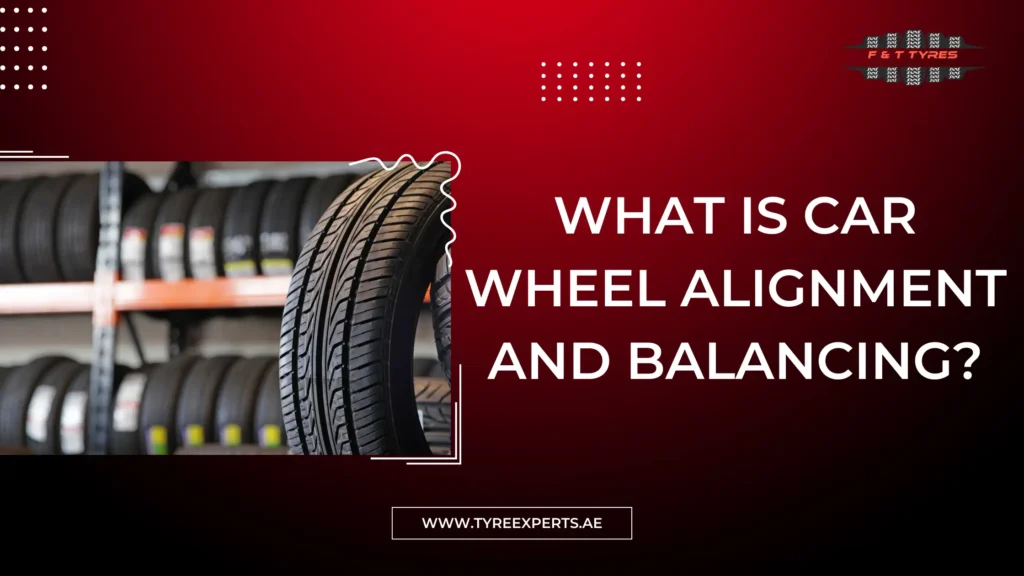When it comes to maintaining your vehicle, wheel alignment, and balancing are critical components. These processes ensure that your car handles properly and that your tires wear evenly, ultimately leading to a safer and more efficient driving experience. In this article, we’ll explore the intricacies of wheel alignment and balancing, why they are important, and how they benefit your vehicle.
What Is Wheel Alignment?
Wheel alignment, often referred to as tracking, involves adjusting the angles of the wheels so that they are set to the manufacturer’s specifications. This process ensures your vehicle drives straight and doesn’t pull to one side. There are three main aspects of wheel alignment:
- Camber: This is the angle of the wheels when viewed from the front of the car. If the top of the wheel is leaning out from the center of the car, it is a positive camber; if it is leaning in, it is a negative camber. Incorrect camber can cause uneven tire wear.
- Toe: This refers to the direction in which the wheels are pointed, relative to the centerline of the vehicle. Toe-in means the fronts of the wheels are closer together than the rears, while toe-out means the fronts are further apart. Proper toe adjustment ensures stability and even tire wear.
- Caster: This is the angle of the steering axis when viewed from the side of the car. A positive caster means the steering axis is tilted towards the driver, while a negative caster means it is tilted away. Caster influences the steering effort and stability of the vehicle.
Why Is Wheel Alignment Important?
Proper wheel alignment is crucial for several reasons:
- Enhanced Tire Life: Misaligned wheels cause uneven tire wear, reducing the lifespan of your tires and leading to costly replacements.
- Improved Fuel Efficiency: Properly aligned wheels reduce rolling resistance, improving your vehicle’s fuel efficiency.
- Better Handling: A correctly aligned vehicle will handle better, providing a smoother and safer driving experience.
- Reduced Strain on Vehicle: Misalignment puts additional stress on suspension and steering components, leading to premature wear and potential failures.
What Is Wheel Balancing?
Wheel balancing, on the other hand, ensures that the weight of the wheel and tire is evenly distributed around the axle. This process involves placing the wheel and tire on a balancing machine, which spins them to determine where the imbalance is. Technicians then add small weights to the rim to correct the imbalance.
Types Of Wheel Balancing
There are two main types of wheel balancing:
- Static Balancing: This method corrects vertical imbalances (up and down movement). It involves placing a single weight on the opposite side of the heavy spot on the tire.
- Dynamic Balancing: This method addresses both vertical and lateral imbalances (side-to-side movement). It involves placing weights on both the inner and outer edges of the wheel.
Why Is Wheel Balancing Important?
Proper wheel balancing offers several benefits:
- Smoother Ride: Balanced wheels prevent vibrations that can cause a rough and uncomfortable ride.
- Extended Tire Life: By ensuring even weight distribution, balanced wheels prevent uneven tire wear.
- Protects Suspension: Unbalanced wheels can cause additional stress on suspension components, leading to premature wear and potential damage.
- Enhanced Safety: Balanced wheels improve vehicle stability and handling, contributing to overall safety.
Signs That You Need Wheel Alignment And Balancing
Knowing when your vehicle requires wheel alignment and balancing can save you from more significant issues down the road. Here are some signs to look out for:
Indicators Of Misalignment
- Uneven Tire Wear: If you notice that one side of your tire is wearing faster than the other, it could be a sign of misalignment.
- Steering Wheel Off-Center: If your steering wheel is not centered when driving straight, your wheels may be misaligned.
- Vehicle Pulls to One Side: If your car consistently pulls to one side, even on a straight road, it’s likely a sign of misalignment.
- Vibrations While Driving: Misalignment can cause your vehicle to vibrate or feel unstable at higher speeds.
Indicators Of Unbalanced Wheels
- Vibration in the Steering Wheel: A vibrating steering wheel, especially at higher speeds, is a common sign of unbalanced wheels.
- Uneven Tire Wear: Similar to misalignment, unbalanced wheels can cause uneven tire wear.
- Noise from Wheels: Unbalanced wheels can create unusual noises, often described as a humming or thumping sound.
- Poor Fuel Economy: Unbalanced wheels can increase rolling resistance, leading to reduced fuel efficiency.
How Often Should You Get Wheel Alignment And Balancing?
The frequency of wheel alignment and balancing depends on several factors, including your driving habits and road conditions. However, as a general guideline:
- Wheel Alignment: It’s recommended to check your wheel alignment at least once a year or every 12,000 miles. Additionally, you should have your alignment checked if you notice any of the signs mentioned above or after a significant impact, such as hitting a pothole or curb.
- Wheel Balancing: You should have your wheels balanced whenever you replace your tires or if you experience vibrations while driving. Regular checks every 5,000 to 6,000 miles are also advisable.
Wheel Alignment And Balancing Process
Understanding the process of wheel alignment and balancing can help you appreciate the importance of Wheel Alignment services and ensure you receive proper maintenance for your vehicle.
Wheel Alignment Process
- Initial Inspection: Technicians inspect the suspension and steering components to ensure they are in good condition. Worn or damaged parts can affect alignment.
- Measuring Alignment Angles: Using specialized equipment, technicians measure the camber, toe, and caster angles of each wheel.
- Adjusting Angles: Based on the measurements, technicians make precise adjustments to the suspension and steering components to bring the wheels into proper alignment.
- Final Inspection: A final check is performed to ensure all angles are within the manufacturer’s specifications.
Wheel Balancing Process
- Removing the Wheel: The wheel and tire are removed from the vehicle.
- Mounting on a Balancer: The wheel and tire are mounted on a balancing machine, which spins them to identify imbalances.
- Adding Weights: Technicians add small weights to the rim to correct any imbalances detected.
- Rechecking: The wheel is spun again to confirm the balance, and adjustments are made if necessary.
- Reinstalling the Wheel: The balanced wheel is reinstalled on the vehicle.
Choosing A Reputable Service Provider
When it comes to wheel alignment and balancing, choosing a reputable service provider is essential to ensure the job is done correctly. Here are some tips to help you select a reliable provider:
- Check Reviews and Recommendations: Look for reviews and recommendations from other customers. Online platforms and local forums can provide valuable insights into the quality of service.
- Certifications and Training: Ensure that the technicians are certified and have undergone proper training. Reputable shops often display certifications from recognized organizations.
- Modern Equipment: Choose a service provider that uses up-to-date and well-maintained equipment. Modern alignment and balancing machines offer greater accuracy.
- Transparent Pricing: A trustworthy service provider will offer transparent pricing and provide detailed explanations of the services they offer.
Conclusion
Wheel alignment and balancing are crucial maintenance tasks that ensure your vehicle’s optimal performance, safety, and longevity. By understanding the importance of these services and recognizing the signs that your vehicle needs them, you can keep your car in top condition and enjoy a smoother, safer ride. Regular checks and choosing a reputable service provider are key steps in maintaining your vehicle’s alignment and balance.
Frequently Asked Questions
What Is The Difference Between Wheel Alignment And Wheel Balancing?
Wheel alignment involves adjusting the angles of the wheels to ensure they are parallel to each other and perpendicular to the ground, according to the manufacturer’s specifications. This helps the vehicle drive straight and prevents uneven tire wear. Wheel balancing, on the other hand, ensures that the weight of the wheel and tire is evenly distributed around the axle. This prevents vibrations and ensures a smooth ride.
How Often Should I Get My Wheels Aligned And Balanced?
It’s recommended to have your wheel alignment checked at least once a year or every 12,000 miles. Wheel balancing should be done whenever you replace your tires or if you experience vibrations while driving. Regular checks every 5,000 to 6,000 miles are also advisable.
What Are The Signs That My Vehicle Needs Wheel Alignment?
Signs that your vehicle may need wheel alignment include:
- Uneven tire wear
- The steering wheel is off-center when driving straight
- The vehicle pulls to one side
- Vibrations while driving
Can Driving Conditions Affect My Wheel Alignment And Balancing?
Yes, driving conditions can significantly impact your wheel alignment and balancing. Hitting potholes, curbs, or driving on rough roads can cause misalignment and unbalance your wheels. Regular maintenance and checks can help identify and correct these issues before they lead to more significant problems.
What Are The Benefits Of Regular Wheel Alignment And Balancing?
Regular wheel alignment and balancing offer several benefits, including:
- Enhanced tire life by preventing uneven wear
- Improved fuel efficiency due to reduced rolling resistance
- Better handling and a smoother ride
- Reduced strain on suspension and steering components
- Enhanced overall safety and vehicle stability



